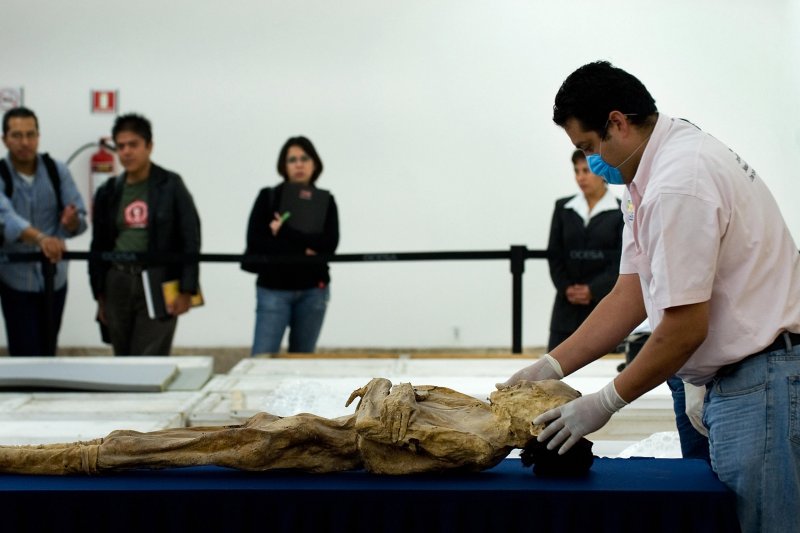The Daily Beast, an award-winning original reporting and sharp opinion from big personalities in the arenas of politics, pop-culture, world news and more, published an interesting article explaining the morbid experience of visiting one of Guanajuato’s often considered must-see places, the “Mummy Museum”.
Beginning in the early 1860s, hundreds of the dead were interred in above-ground crypts in the Santa Paula Pantheon of the silver-mining town of Guanajuato, Mexico. Today, their bodies are on display at a museum in gruesome states of preservation, mouths gaping and hair and clothes still intact.
A few years after the crypts opened, the town passed a law requiring families to pay a burial tax; if they failed, the bodies of their loved ones would be removed. When authorities opened the crypt to take out the deceased whose relatives had defaulted on their fees, they found the bodies had been naturally mummified by a combination of the tomb’s cement walls, heat, and low humidity. The first mummy discovered is said to be the body of Remigio Leroy, a French doctor.
Soon after the preserved corpses were unveiled, curious people began paying workers a few pesos for a peek at the tombs. Allegedly, those first visitors even broke off bits of the bodies as souvenirs. For the next 90 years, until 1958, bodies continued to be stored in the mummifying conditions of the original crypt, resulting in a total of 111 mummies. Ten years later, the city of Guanajuato opened an official museum to house them.
Visitors today can view 59 of the mummies in a morbid exhibit at the Museo de las Momias de Guanajuato, which has become the UNESCO Heritage town’s largest attraction. Among those displayed is a woman who died in childbirth, a few small infants, and what’s thought to be the youngest mummy in existence—a 24-week-old fetus.
Starting in 2007, an American team of researchers began the first scientific analysis of the mummies to try to find clues to the identities of 22 of the bodies, determine causes of death, and debunk town myths. One of the myths they proved false, for example, was the story that a local woman was hanged by her husband.
But mummified mysteries remain. Researchers also found evidence of embalming, which they’ve struggled to explain—two infants and the fetus had organs removed and replaced with cotton batting after death. Another young man died from a blow to the head. And one particularly horrific local legend tells of a woman buried alive. As one story goes, she suffered from an illness that caused her heart to stop, and after one particularly long period, her family, thinking she had died, buried her. She was discovered with her arms up over her head, covering her face, and apparently was face-down in her coffin, perhaps using her back to press up on the lid. Scientists are searching for clues to verify the legend that she had been alive at the time of burial, but haven’t found data to support it yet.
A mummy museum showcasing the town’s ancestors may seem like a grisly attraction, but in a country that annually celebrates the deceased in full-blown, extravagant fashion during the Día de los Muertos, the preserved mummies of the Santa Paula Pantheon don’t seem that out of place. Though not all visitors embrace death as understandingly. When author Ray Bradbury visited Guanajuato’s mummies, he based a short story called “The Next in Line” on the horrors he found there. “The experience so wounded and terrified me, I could hardly wait to flee Mexico,” he later wrote about his trip. “I had nightmares about dying and having to remain in the halls of the dead with those propped and wired bodies.”
Source: TheDailyBeast

